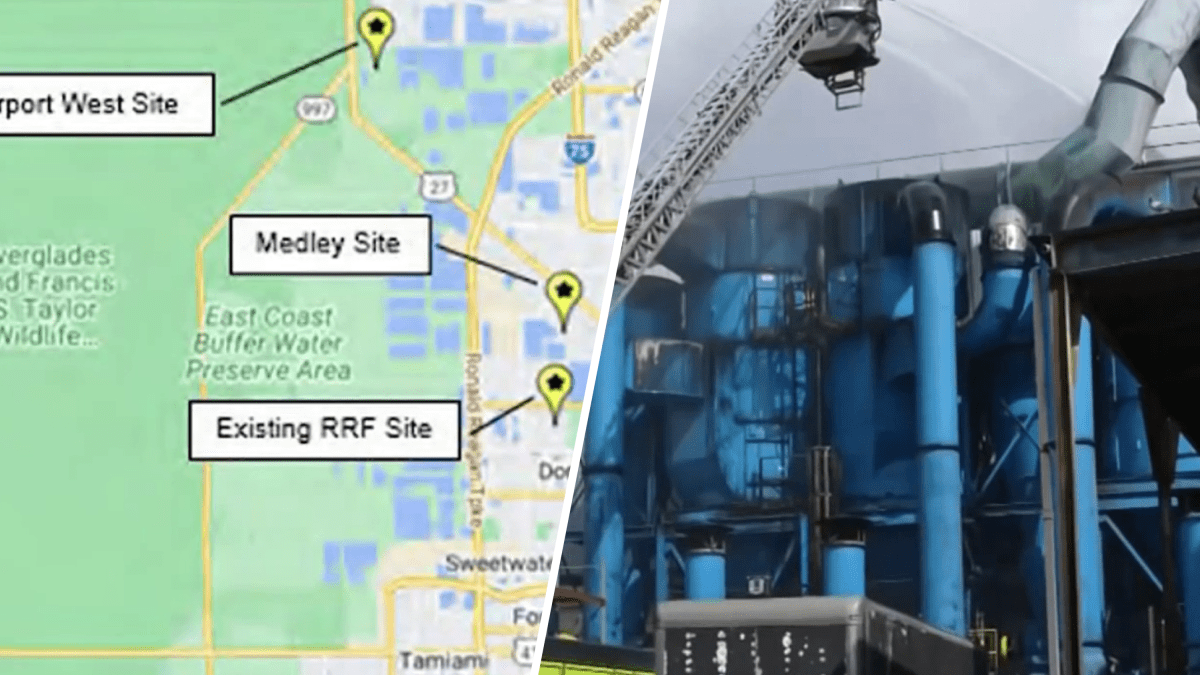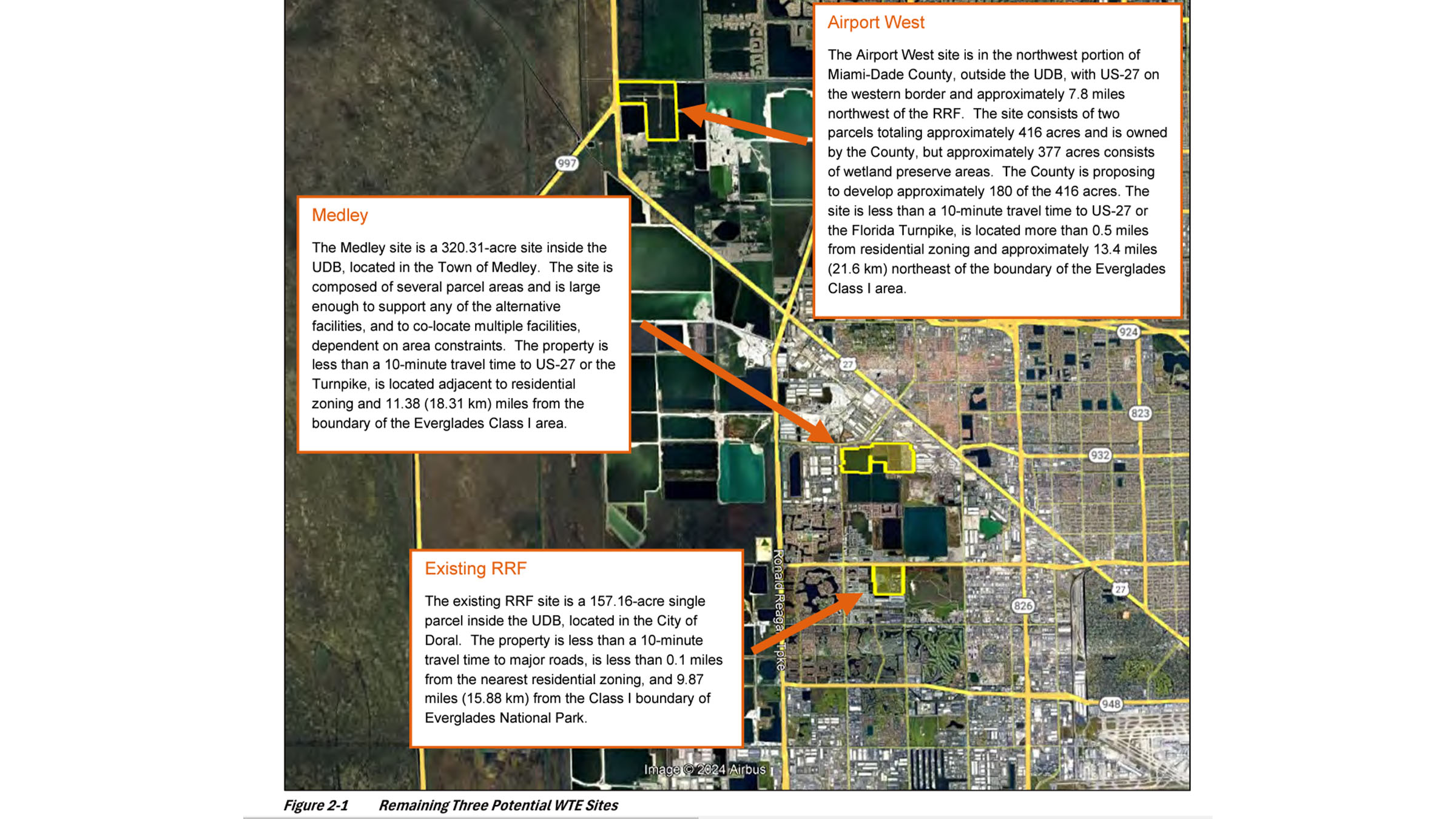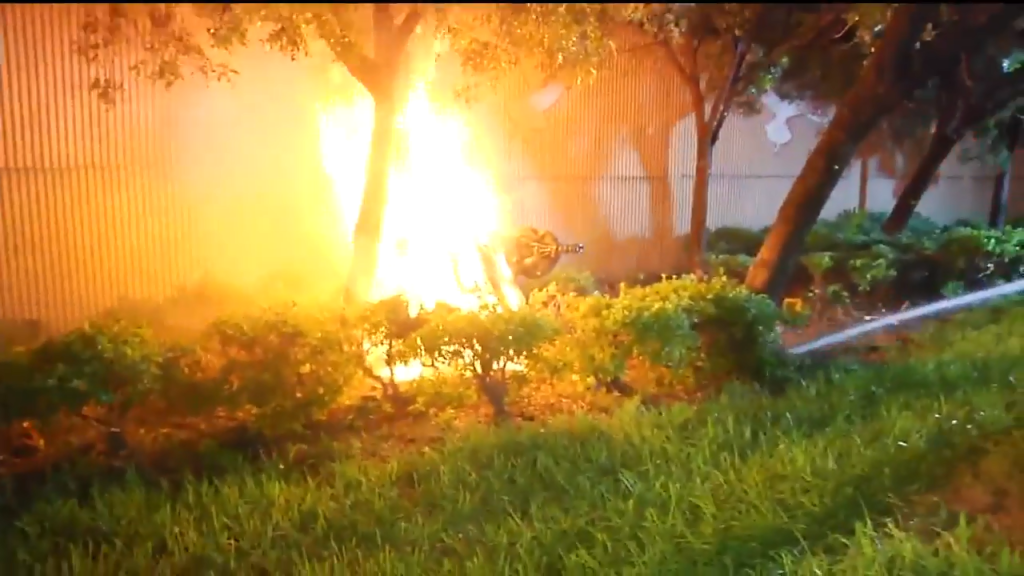Miami-Dade County consultant weighs in on trash-to-energy sites – NBC 6 South Florida

A consultant hired by Miami-Dade County to assess the impact of a trash-to-energy plant on the air, environment and human health has submitted a report that concludes the facility – wherever it may go – will have minimal impacts on ecology and present low health risks to people in surrounding areas.
But it does find each site has plusses and minuses that the administration will have to weigh before recommending one of three sites to county commissioners, a decision County Mayor Daniella Levine Cava says will come on Sept. 4.
The report comes as the county faces a potential looming solid waste disposal crisis, as landfills are filling up and the 40-year-old waste-to-energy (WTE) plant near Doral was destroyed by fire last year.
The consultant, Arcadis, was hired to examine the existing Doral site and two others – one in Medley, and the other called Airport West, on the northwest fringe of developable land just south of the Broward County line.

Its report details the impact a plant that burns 4,000 tons of trash a day would have on air quality, the environment and human health.
It concluded “development of a new WTE facility within the County appears feasible for the three potential sites … (but) will be very challenging because of the numerous existing emissions sources in Miami-Dade County, the County’s close proximity to the Everglades National Park … as well as the complex analyses required for permit approval… For each site, the extensive environmental and development permitting required for a new WTE facility will be challenging and will potentially be longer and more costly than initially expected given the current regulatory environment and pending new EPA emissions standards applicable to WTE facilities.”
Here are some of their conclusions:
DORAL
It “remains the likely fastest and least expensive option. The site appears to be feasible with regards to air permitting and may offer some advantages during the permitting process, as the site is already fully developed and operated since the 1980’s as certified site under the Power Plant Siting Act (PPSA). Also, the site could provide an opportunity to use the historical emissions data to show an overall net-benefit on the nearby air quality when comparing to past site operations. … However, being the closest of the three sites to the Everglades (National Park), a demonstration of no adverse impacts on visibility and sulfate/nitrate deposition loading will be required during the formal air modeling and regulatory approval process.”
AIRPORT WEST
It “yielded slightly better results in the preliminary air dispersion modeling and appears to be relatively more favorable for air permitting than the other two sites. However, the air permitting effort will be challenging for any of the three sites due to the close proximity to existing emissions sources and the Everglades (National Park). Also, the site has significant environmental challenges, as mentioned in previous reports …., that are likely to extend the project schedule and result in additional development costs.”
MEDLEY
The Medley site – the only one on land not owned by the county – “appears to be feasible with regards to air permitting but will likely be the most complicated and challenging of the three sites due to nearby large emissions sources (a concrete plant and existing landfill)…. The site will require extensive modeling analyses to show compliance with (standards)… The site is slightly further away from the Everglades (National Park) and therefore, no adverse impacts on visibility and sulfate/nitrate deposition loading will need to be demonstrated during the air permitting and modeling approval process.”
The report estimated the county would have to pay $113 million for the land in Medley, making it the most expensive of the three options. The current site would be the cheapest because it already has some infrastructure in place and it would take the least time to complete, just under eight years. The other two sites would take more than nine years to get done.
With respect to human health risk, all three sites have low risk with results within or below the regulatory established risk levels, the report stated, estimating the worst-case health risk level at all three sites is below the risk posed by simply walking down the street and inhaling car exhaust. (But it notes plants near residential areas would expose more people than one farther from residential populations.)
From an ecological risk perspective, the report finds that “the potential ecological risks associated with air emissions at the three proposed locations are minimal and should not have an impact on the health of the surrounding ecological communities.”
The county administration told commissioners in a memo sent Friday that “the next step is to conduct community outreach regarding the analysis and findings set forth in the respective reports, making sure to include any impacted cities, communities, and organizations, as well as any information that could be garnered from the various regulatory agencies. Our plan is to bring a report with our siting recommendation to the Board on the agenda for the September 4, 2024, Board meeting.”


